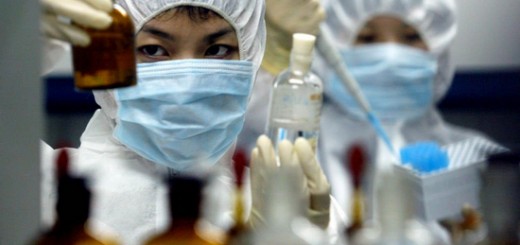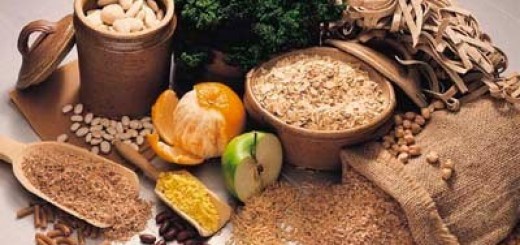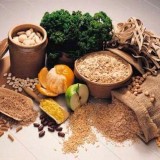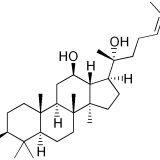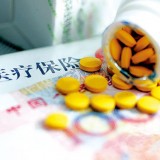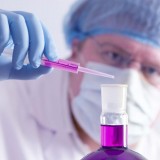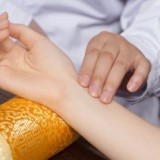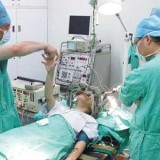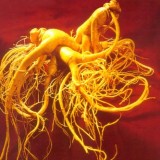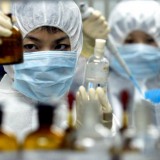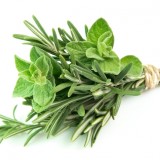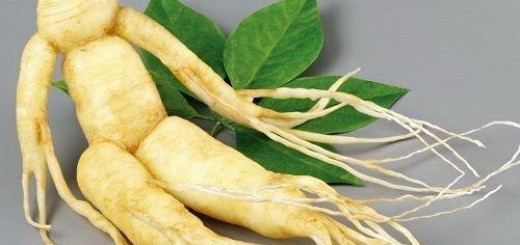Panax is a genus of perennial herbs, with two species in eastern North America and perhaps 5-10 species in Asia. American ginseng occurs from southern Ontario and south-western Quebec south to Oklahoma, Louisiana, and northern Florida.
The un-branched, erect stems of American ginseng arise from a short rhizome and an elongated tuberous root. The root is 1-3 cm thick and 5-10 cm long, spindle-shaped, and often forked. The roots of older plants become branched and acquire prominent circular wrinkles; they are slightly aromatic, and have a sweetish, somewhat bitter taste. Mature plants are 20-70 cm tall, with a whorl of three or four long-stalked, palmate leaves, each generally with five large leaflets, of which the upper three are larger than the lower two. In mid-summer, 6-20 small, yellowish flowers are borne on a short stalk arising from the centre of leaf attachment at the top of the stem. Fruits begin to ripen at the end of July and mature to a deep red color.
Reproduction is entirely by seed. Seeds are produced by plants more than 3 years old with up to 150 being generated by a single plant. However, commonly, only a few seeds are matured by wild plants. Once a seedling of American ginseng has become established, its life expectancy is over 20 years, and some plants have been reported to live to at least 60 years of age.
Ginseng occurs in colonies of a few to hundreds of plants in rich, shady, deciduous forests, in deep leaf litter. Sites are frequently on northern or north-eastern cool rocky slopes, commonly in areas with limestone outcrops in damp but well-drained soils. American ginseng thrives in 75% shade, and even shadier locations in the southern limits of its range. Clear-cutting of virgin forests and over-harvesting have drastically reduced the size of wild populations.
















